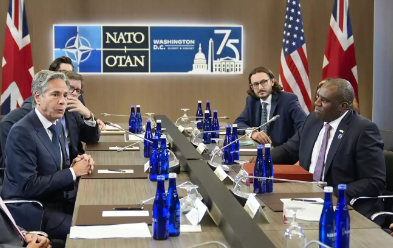Why Indo-Pacific Countries are Joining the NATO Summit?
The recent NATO summit held in Washington included the Indo-Pacific Four (IP-4): Japan, South Korea, New Zealand, and Australia. This shows how NATO’s strategy has changed because of new global risks, like the tension over Taiwan and closer cooperation between Russia and China. These countries are taking part because they are worried about China’s actions and goals in the area, which could upset the balance of power in the world.
About NATO
- Establishment and Membership: NATO, or the North Atlantic Treaty Organization, was established on April 4, 1949. It originally included 12 countries and has since grown to 30 members.
- Collective Defense and Military Action: Article 5 of NATO says that an attack on one country is an attack on all. This article has only been used once, after the September 11 attacks in the United States. The first time NATO sent troops into battle was in Bosnia in the 1990s.
- Standardization and Headquarters: The NATO script was created to make military communication more uniform, but it is now used all over the world. The group’s main office is in Brussels, Belgium, and its secretary-general is replaced every few months.
NATO’s Strategy and Its Expansion Beyond the North Atlantic
NATO used to only be concerned with security in the Euro-Atlantic area, but as risks around the world have changed, it has slowly grown to include more areas. Because Russia and China are becoming bigger problems, the 2023 meeting stressed how important the Indo-Pacific is to the politics of the Euro-Atlantic region. In addition to protecting the “rules-based international order,” NATO is now also working to stop China from using force, and it is tackling structural threats to European security.
Indo-Pacific Alignment with NATO Objectives
NATO is building ties with non-member countries in the Indo-Pacific to improve global security, even though it is usually an alliance between countries in the Euro-Atlantic region. This includes projects that bring together people from different fields to work on new areas like cybersecurity, AI, and fighting misinformation. This change also backs up larger U.S. plans to work together with Indo-Pacific forces more closely, which makes NATO even better at adapting to the needs of global security.
European Involvement in the Indo-Pacific Region
Even though European involvement in the Indo-Pacific is growing, it is still pretty low-key. For example, the U.K. is a part of the AUKUS deal, and Europe’s military is only sometimes present in the area. But some NATO members and Indo-Pacific countries are worried that NATO’s reach is growing too far beyond its original regional focus.
Future Perspectives on NATO and the Indo-Pacific
Since things are getting worse in the area, especially around Taiwan, NATO may play a bigger role there. Some people say that a strong NATO in Europe could give the U.S. more time to deal with growing problems in the Indo-Pacific. Still, some people aren’t sure what the real effects of NATO’s role in Asian conflicts are. They say that the European militaries aren’t as strong as they could be because of a history of underinvestment and their need for U.S. help with logistics. The main point is that NATO’s growing attention on the Indo-Pacific shows how global security problems are linked and how the roles of international alliances in keeping different areas stable are changing.
Month: Current Affairs - July, 2024
Category: Summits and Conferences








